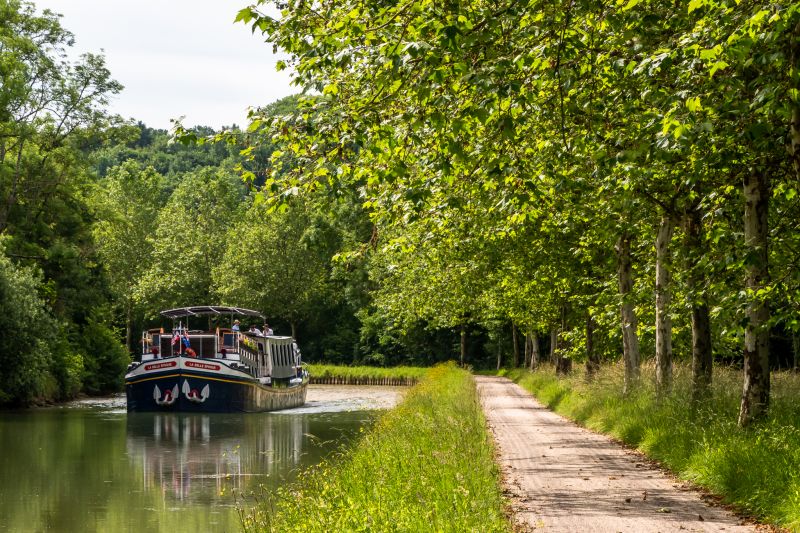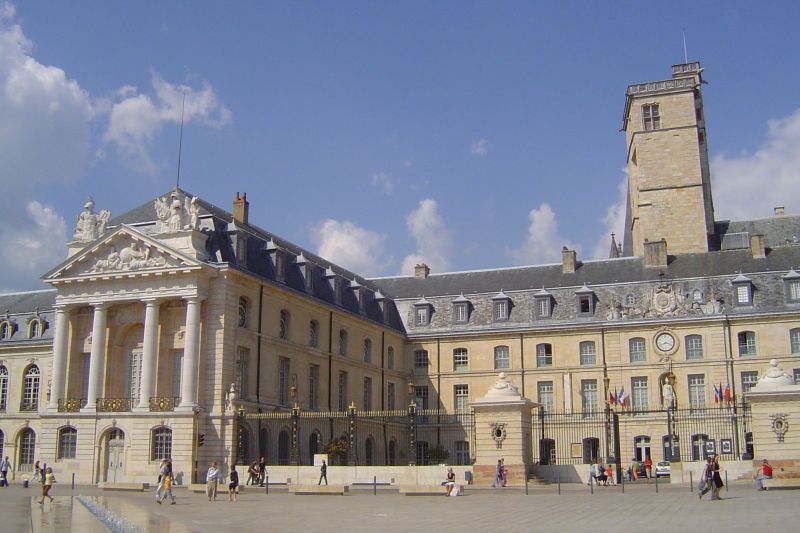We thought you might like to know a little more about one of France’s most famous waterways, which plays host to Hotel Barges La Belle Epoque and L’Impressionniste
The Waterways of France - The Burgundy Canal

The Burgundy Canal - The Geography
The Burgundy Canal is 150 miles long with 189 locks and connects the River Yonne at Migennes with the River Saone at St-Jean-de-Losne. It has the highest summit of any canal in France, reaching 378m (980 ft) above sea level at the summit, which is the 2 mile long Pouilly tunnel. The tunnel is two miles long and runs in a straight line. At the time of construction, 90% of the work had to be done by hand which was a hard and dangerous job. At its deepest section, the tunnel runs 150 feet below the surface. 32 shafts were constructed to assist in hauling the spoil to the surface during the digging and today, these shafts provide ventilation to the boats passing through the tunnel below.

The Burgundy Canal - Humble Beginnings
The history of the Burgundy Canal is long and complicated. Although the first act in support of its construction was the 1607 tax placed on local farmers to help finance a segment of the waterway, the final route was not agreed until more than 100 years later. In the mid-17th century Pierre Paul Riquet, the chief engineer of the Canal du Midi, proposed a route which was thought to be too expensive, then in 1696 the military engineer Vauban proposed five different designs, one of which was ultimately adopted 30 years later. However, work did not begin until 1777, at the beginning of the reign of Louis XVI.

The Burgundy Canal - Revolution!
Construction began in the west, alongside the River Yonne, working upstream towards the town of Tonnerre. A few years later, work began on the Saône side in the east, working west towards Dijon. The Yonne side of the canal fell rapidly behind schedule, and, due to inadequate funding, the construction of that section halted in 1793.
The French Revolution and the Napoleonic Wars further slowed progress on the construction. The State of Burgundy, however, pushed ahead, completing the first segment of the canal between the city of Dijon and the River Saône 15 years later so that in December 1808 the first barges arrived in the port of Dijon. Yet even with the support of the Emperor Napoleon, the completion of the full canal still met numerous delays due to problems with financing and construction.

The Burgundy Canal - Completion, Decline & Revival
Finally, the necessary funds were secured and the project was brought to completion. In late December 1832 the first boat to traverse the entire route of the Canal de Bourgogne set out from Paris, arriving in Dijon on January 3, 1833. The canal at last connected the north of France to the south and the River Seine to the River Rhône. One of the final challenges of the construction project was the complicated and impressive Pouilly Tunnel, which forms the summit. The building of the tunnel started in 1826 and took six years to complete, some say partly with forced labour in the form of English prisoners of the Napoleonic Wars.
Like the other canals in France, by the mid-19th century the Burgundy Canal’s commercial importance was starting to wane, due to the emergence of a rail network, transport along the waterways became slow and outmoded. Fortunately, in more recent times, tourism has breathed new life into the waterway and the towns it serves, and today the Canal de Bourgogne is one of the most popular pleasure-boat destinations in France!

 English
English
 Spanish
Spanish French
French German
German Norwegian
Norwegian Portuguese
Portuguese Swedish
Swedish Italian
Italian Russian
Russian Simplified Chinese
Simplified Chinese Japanese
Japanese